Pepper cultivation has its own subtleties, and not even all experienced gardeners know them perfectly. One of the procedures of doubt is picking. Vegetable growers often argue whether it is necessary to dive sweet pepper, because it is known that the root system of the nightshade family is very fragile.
But at the same time, plants need room for growth, which cannot be achieved by growing many seedlings in one cramped box. This is what speaks in favor of a transplant, but having decided on it, you should familiarize yourself with all the rules, since fragile roots are really very easy to damage, and restoring them (if at all possible) will take a lot of time.
Content
Do I need to dive pepper
Before you begin to describe the pros and cons of a pick, you should familiarize yourself with what this process is. A pick is a transplant of young plants from a common capacity into separate small cups. This is an important agricultural process, which is designed to "accustom" the plant to transplants. In addition, picking helps to provide the crop with the optimal amount of nutrition and allows you to grow strong and healthy seedlings.
Due to weak roots, the plant is often planted several seeds in one container, so that in the future it is also transplanted to a permanent place. It happens that several sprouted seeds are sown in one container at once, and after germination they leave 1-2 the strongest sprouts. After the young shoots get stronger, and the time comes for planting, they are moved together with the soil (to reduce the risk of damage to the roots). This method is called transshipment.
With a thickened landing, it is advisable to pick as early as possible, because over time the sprouts begin to obscure each other, and their roots are closely intertwined, which complicates the transplant process.
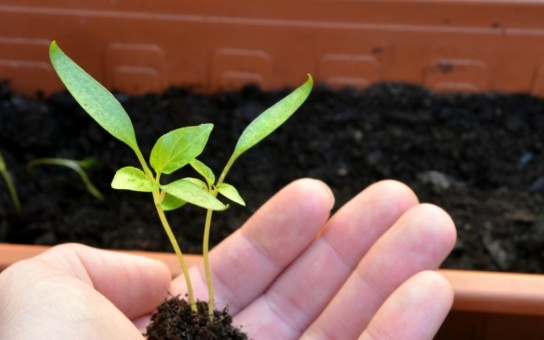
Young shoots most often do not even “notice” a change of place of residence, and for more adult seedlings this process is very painful. If pepper is grown in a box, small cassettes or several sprouts in one container, then dive seedlings nevertheless, it is necessary, because it is necessary for the normal growth and development of culture.
Bell peppers are best planted with or without picking.
Beginners wishing to start growing Bulgarian sweet pepper seedlings, you should carefully read the disadvantages and advantages of picking, which will help to make a decision: plant pepper with picking or you can do without it.
Pros and cons of the procedure
Despite all the disadvantages, picking has several advantages:
- it can increase productivity, because you can sow a large amount of planting material;
- a dive plant has a stronger stem, which prevents damage and breakage;

Pickled bell pepper - the procedure contributes to the good development of the root system, which perfectly holds the aerial part, even with strong gusts of wind;
- after a pick, the plant grows much better in the fibrous appearance of the roots, providing the sprouts with the necessary substances and moisture;
- picking saves space from sowing to planting in a permanent place.
The disadvantages include the complexity of the procedure, which requires maximum caution in order to avoid damage to the roots. Frequent soil changes can cause the development of diseases or mass infection of seedlings. Picked specimens shift the fruiting period, because after transplantation they actively increase the root system, and the aerial part slows down in growth.
Dive Rules
Since it has been proven that picking damages the roots of peppers, a safer transplant method should be used, for example, planting seeds in a snail or in small cassettes. When sowing, you can place the seeds in a common container so that they are away from each other and their roots are not intertwined.
About a few hours before the pick, the soil is well watered so that it clings tightly to the roots and does not crumble. Such soil is much easier to extract from an old tank. Next, prepare a new container: individual pots, cups or a container divided into sections. Tanks and soil mixtures must be disinfected (you can use a solution of potassium permanganate). Tanks are filled with fresh soil 1/3, and then proceed to picking:
- A small tool (spoon or spatula) carefully picks pepper sprouts from the old container. It is advisable to separate 1 pc. at once. If it was possible to extract two seedlings together, they are carefully manually separated and planted in separate cups.
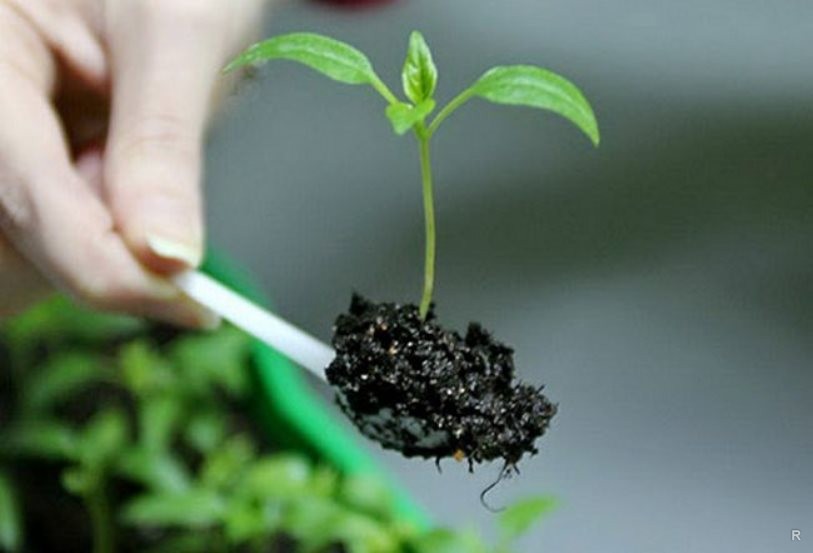
Pepper sprouts - In fresh soil, make a small depression and put seedlings into it so that it is at the same depth as in the previous container.

Landing - The roots are sprinkled with soil and rammed a little so that the sprout is firmly fixed in the ground.
- Planted peppers watered warm water.
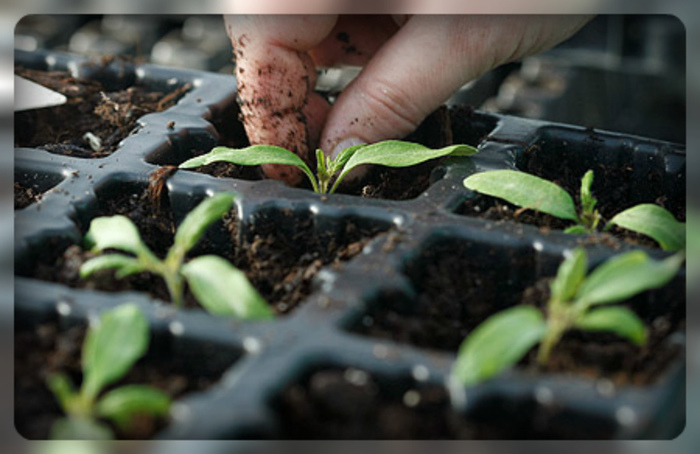
If the soil after irrigation is heavily donkey, add a little earth on top.
Experts note that the position of the root in the soil plays a very important role in the further development of culture. It is important that it is not bent or twisted counterclockwise. Experienced vegetable growers recommend a transplant to lower the seedling deep into the soil, sprinkle with a substrate and stretch a little. When performing such a manipulation, the roots will align and take the correct position underground.
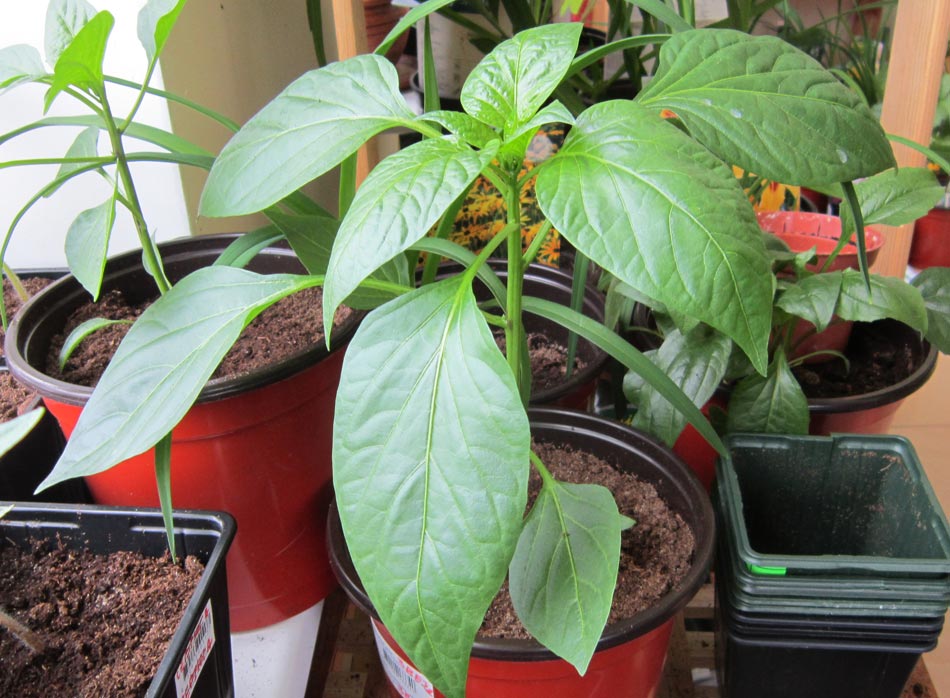 You may be interested in:
You may be interested in:How to grow peppers without diving
Residents of the middle strip to grow peppers in a non-seedling way is simply impossible. And in a cold climate, culture can bear fruit only in greenhouses and greenhouses. The gardeners of these regions do not want to spend time restoring the roots after a dive, therefore they prefer to plant the seeds immediately in separate cups of 2-3 pcs., Of which one of the strongest sprouts is left.
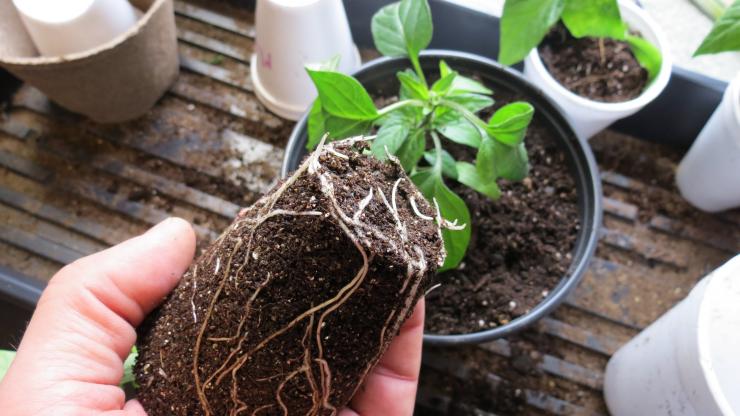
Recently, special peat tablets are gaining popularity, but for peppers they are not very suitable. Their walls consist of cardboard, which is poorly soluble in soil. This means that with the growth of the root system, it will take a lot of time to break through such a barrier. Vegetable growers note that cardboard significantly inhibits seedling growth.
You can grow vegetables in plastic wrap or in paper cylinders. It is better to use newsprint, which, when water enters, quickly spreads, freeing up space for the roots.And film cylinders are easy to deploy and remove from the ground without affecting the roots. If the culture is grown in separate cups, then a few days before transplanting they stop watering. The soil during this time will have time to compact a little and move away from the walls of the container, which greatly facilitates the process of extracting an earthen coma for the vegetable grower.
Summer residents note that the culture has a compact root system, so the cups for planting should not be too deep. Transshipment is advised before the roots grow to the walls of the glass (when the plant has not yet fully mastered the earthen lump). For landing, it is advisable to pick up sufficiently wide containers.
Reviews
Sergey: “I’ve been doing pepper seedlings for many years, so I’m very good at diving. Spiked seedlings after the appearance of the 5th leaf in disposable plastic cups in the second half of March. In glasses, they grow before planting in the greenhouse (until mid-May). As soon as the stalk begins to separate, I remove all the leaves and flowers to the "slingshot." Such a procedure stimulates the growth and abundant fruit setting. ”
Natalya: “I have heard more than once that pepper does not tolerate picking and strong penetration of the stem into the soil. Despite this information, my plants grow well after a dive, not a single one was injured. When the stem of the plant is woody, additional roots form in it, which I sprinkle with soil. When planting seedlings in the soil, I can deepen the stem by about 1 cm. The crops are always stable, the main thing is to plant them on a warm bed. "
Vitaliy: “If you do not pick, then the seedlings will grow poorly. When planting in open ground, such specimens become frail and do not bear fruit well. Plants are not much afraid of transplants, if there are a lot of leaves, then the procedure will be transferred painlessly. The main thing is to extract them together with a lump of land. ”
Novel: “A few years ago, after a dive, 10% of the seedlings died. Most likely, this happened due to damage to the roots. I was advised to dive plants after the formation of 7-9 leaves. Now 99% of the seedlings survive to plant in the greenhouse. ”
Marina: “I grow vegetables in seedlings, I have never dived. Pepper really does not like transplants, so I sow seeds in individual containers of 2 pcs., And then plant them on the garden bed as well. When transplanting, I do everything very carefully, because damage to the roots is fraught with growth retardation. ”
Proper picking is the key not only to good growth, but also to a high yield. Experienced vegetable growers have already chosen the optimal method of cultivation for themselves, and beginners are advised to try out the cultivation of the crop with or without picking, and then compare the results.




 Calorie pepper stuffed with meat and rice - BZHU per 100 grams
Calorie pepper stuffed with meat and rice - BZHU per 100 grams Gorky pepper - the best varieties for open ground
Gorky pepper - the best varieties for open ground Hot pepper seeds - the best varieties for open ground and reviews
Hot pepper seeds - the best varieties for open ground and reviews Capsicum tincture for hair - how to use and reviews
Capsicum tincture for hair - how to use and reviews